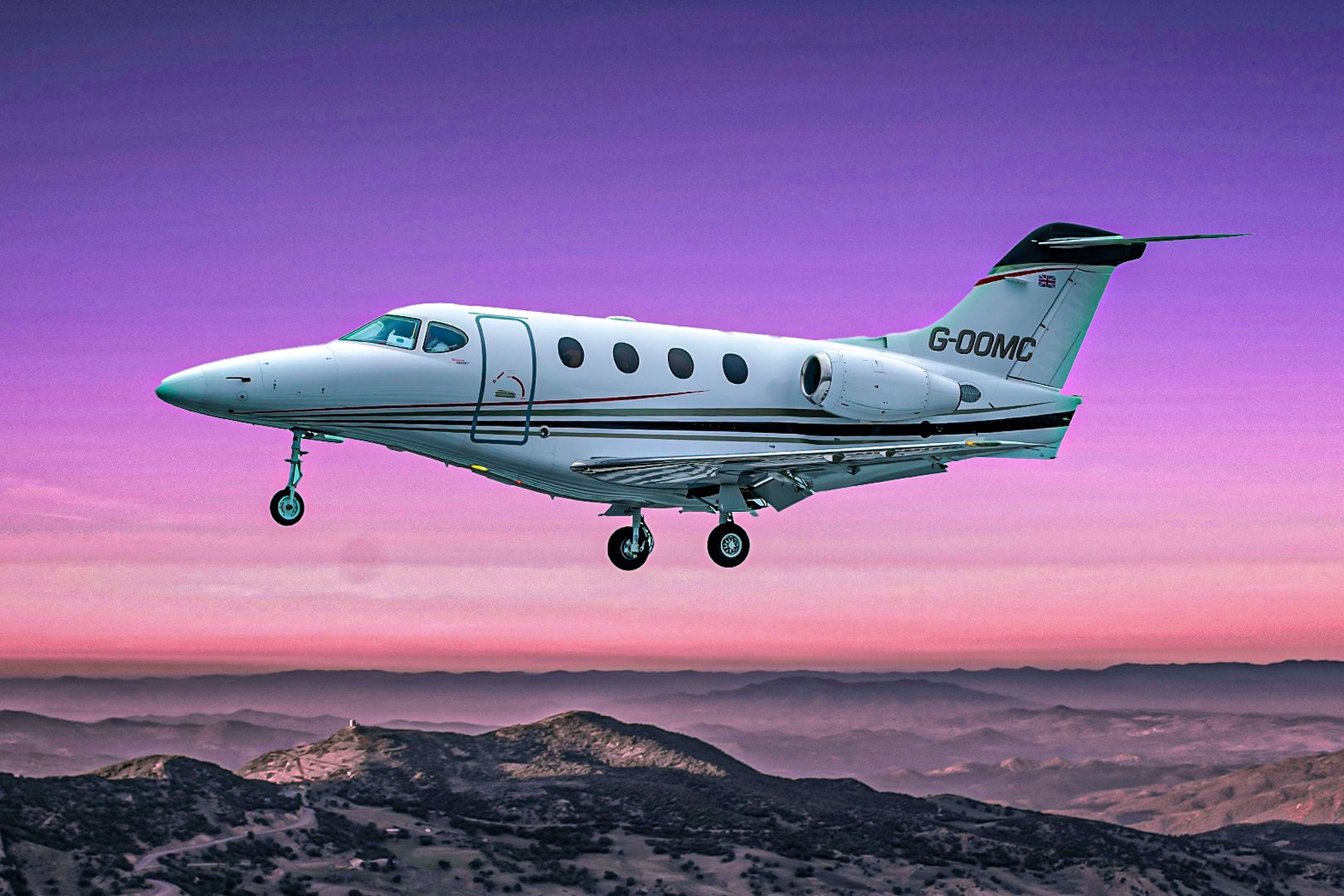Summary The Beechcraft Premier IA featured upgraded avionics, brakes and cabin interior for increased performance and comfort at a price of $7 million. The aircraft was constructed with carbon fiber composite, high strength materials, had a top speed of 451 knots, and a range of 1,365 nautical miles. The Beechcraft Premier II, later branded the Hawker 200, was developed with higher speed, range, and payload, but faced production delays before it ceased production.
The Beechcraft Premier I is a light business jet manufactured by the Beechcraft division of Hawker Beechcraft. It was an independently designed private jet that was to compete with the Cessna Citation Jet series . Let's find out more about the aircraft and its history.

Early days It was first designed in 1994 and officially announced in 1995 at the National Business Aviation Association (NBAA) convention. The first prototype was built in the following year and rolled off the assembly line on August 19, 1998, before its first flight on December 22, 1998. During the test flight program, four prototypes were built and the Beechcraft Premier I was certified by the Federal Aviation Administration in March 2001.
Aircraft issues and rebranding The Beechcraft Premier I entered service in 2001 at a price of $5 million, which was reasonable for a light jet, but there were some issues. The aircraft was found to have poor runway performance and an insufficient cockpit. There were also issues with erratic brakes and a noisy cabin.
Beechcraft decided to rectify the issues and upgraded the model to the Beechcraft Premier IA, in 2006 at a price of $7 million. Beechcraft improved the avionics and brakes and refurbished the interior of the cabin. The Beechcraft Premier IA was certified by the FAA at the end of September 2005 and 163 were built over a five-year period of manufacturing.
About the aircraft The fuselage of the Beechcraft Premier I/!A was constructed with high strength carbon fiber composite material. It had a swept wing design and a drag-reducing fuselage. The engines were Williams International FJ44-2A turbofans with 2,300 pounds of thrust each.
Top speed of Mach 0.80 or 451 knots or 835 kilometers per hour. With four passengers, the aircraft had a range of 1,365 nautical miles (2528 kilometers).
Take-off to 37,000 feet in 17 minutes. Want answers to more key questions in aviation? Check out the rest of our guides here The cabin had four club seats and two further seats at the rear of the cabin and fold out executive tables. There was a small lavatory/washroom and baggage compartment at the rear of the aircraft and a refreshment center at the front and climate control system.
The avionics were the Rockwell Collins Pro Line 21, which decreased pilot workload but gave maximum awareness and displayed critical information. The state-of-the-art system had the latest flight sensors and digital displays. The Rockwell Collins Integrated Flight Information System (IFIS) features Jeppesen charts, weather graphics and map overlays.
Aircraft Specifications General characteristics Crew: 1 Capacity: 6 / 7 Length: 46 ft 0 in (14.02 m) Wingspan: 44 ft 6 in (13.56 m) Height: 15 ft 4 in (4.
67 m) Wing area: 246 sq ft (22.9 m2) Empty weight: 8,600 lb (3,901 kg) Basic Operating Max takeoff weight: 12,500 lb (5,670 kg) Fuel capacity: 3,670 lb / 1,665 kg Max Payload: 1,400 lb / 635 kg Cabin Length × Width × Height: 13 ft 6 in × 5 ft 6 in × 5 ft 5 in (4.11 × 1.
68 × 1.65 m) Hold: 76.9 cu.
ft / 2.2 cu. m Powerplant: 2 × Williams FJ44-2A Turbofan, 2,300 lbf (10.
23 kN) thrust each Performance Maximum speed: 523 mph (841 km/h, 454 kn) max cruise Range: 950 mi (1,530 km, 830 nmi) Max Payload Ferry range: 1,710 mi (2,750 km, 1,480 nmi) Service ceiling: 41,000 ft (12,500 m) Wing loading: 50.6 lb/sq ft (247 kg/m2) Fuel consumption: 1.67 lb/mi (0.
47 kg/km) Thrust/weight: 0.37 Take-off (MTOW): 3,792 ft / 1,156 m Landing (MLW): 3,177 ft / 968 m Avionics Rockwell Collins Pro Line 21 Interested in finding out more about private aviation? Find more articles like this here Selling points The light jet could be flown as a single-pilot operation with six or seven passengers and was aimed at corporations. Beechcraft said that it was an "Executive office at 41,000 feet," according to Air Charter Service .
It had a 30% larger cabin than other light jets, making it a popular choice. Beechcraft lauded the aircraft's direct operating costs per nautical mile as 11% lower than the Cessna Citation CJ2+ and its 50 miles per hour faster speed than its nearest competitor in the light jet category. The company promoted it as value for money and recommended it for multi-city trips.
Further development? The Beechcraft Premier II soon followed. It was developed from the I and IA with the same composite fuselage, but with higher speed, longer range and an increased payload. More powerful engines were added and winglets too, for better performance.
However, Beechcraft announced in August 2009, that they were delaying deliveries until 2012 and 2013, due to the economic recession and poor market conditions. In October 2010, Hawker Beechcraft announced that the Premier II would be rebranded as the Hawker 200. The following year, however, the manufacturer started delaying production of the aircraft.
Hawker Beechcraft was bankrupt by 2012 and the production of business jets ceased shortly thereafter. The Rockets operate a Boeing 767 for team transportation. The aircraft today The Beechcraft Premier I/IA was produced from 2001 to 2012 and 292 of the aircraft were built, many of which are still active today with charter operators.
A typical charter flight today would be around one to two hours, making trips like London, UK to Nice, France very achievable (one hour and 40 minutes). Today, the average price of a pre-owned Premier I/!A is $2.6 million, although one can be found for as low as $1.
5 million. The ideal private jet?.



















